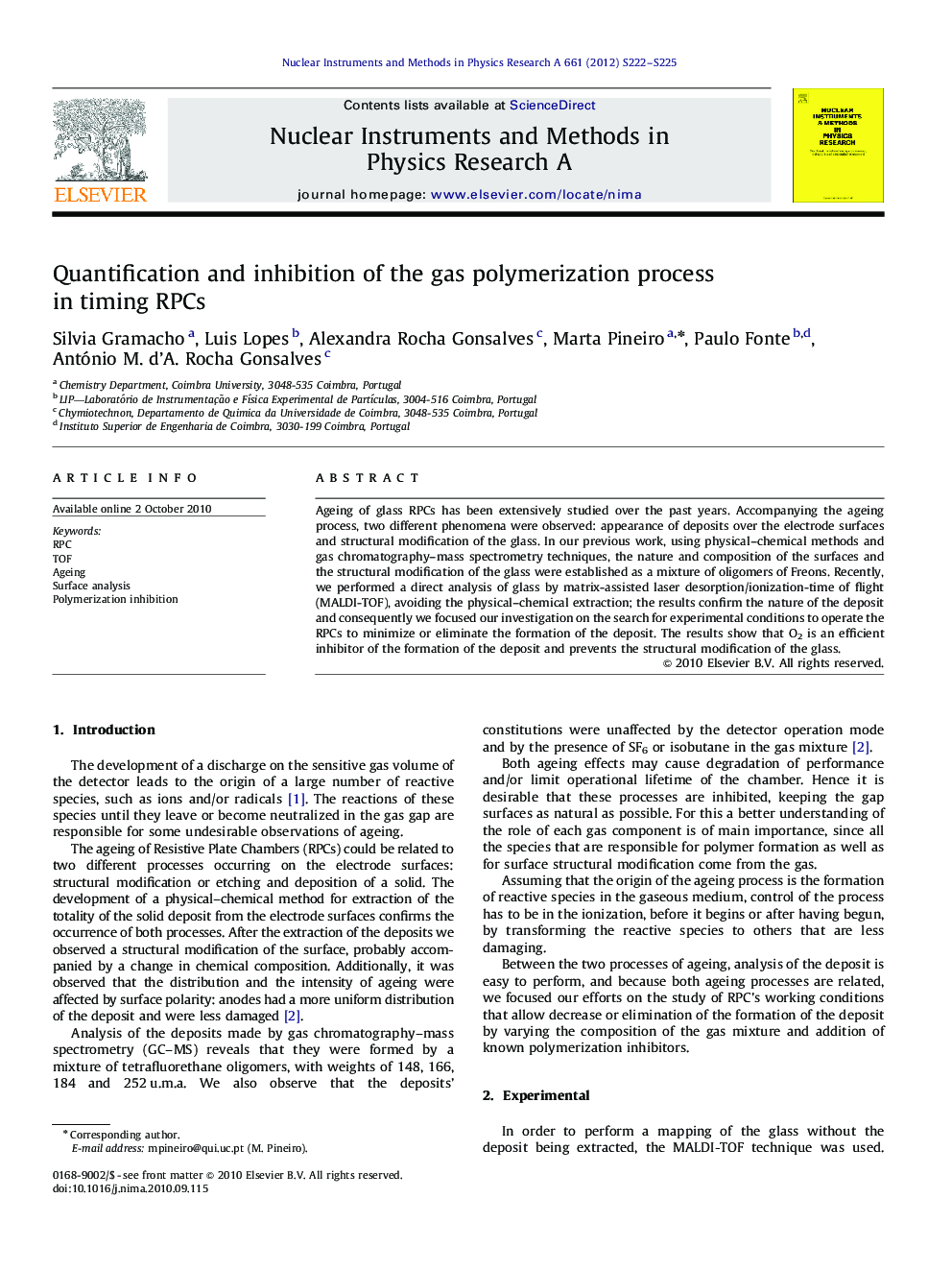| Article ID | Journal | Published Year | Pages | File Type |
|---|---|---|---|---|
| 1824073 | Nuclear Instruments and Methods in Physics Research Section A: Accelerators, Spectrometers, Detectors and Associated Equipment | 2012 | 4 Pages |
Abstract
Ageing of glass RPCs has been extensively studied over the past years. Accompanying the ageing process, two different phenomena were observed: appearance of deposits over the electrode surfaces and structural modification of the glass. In our previous work, using physical-chemical methods and gas chromatography-mass spectrometry techniques, the nature and composition of the surfaces and the structural modification of the glass were established as a mixture of oligomers of Freons. Recently, we performed a direct analysis of glass by matrix-assisted laser desorption/ionization-time of flight (MALDI-TOF), avoiding the physical-chemical extraction; the results confirm the nature of the deposit and consequently we focused our investigation on the search for experimental conditions to operate the RPCs to minimize or eliminate the formation of the deposit. The results show that O2 is an efficient inhibitor of the formation of the deposit and prevents the structural modification of theglass.
Related Topics
Physical Sciences and Engineering
Physics and Astronomy
Instrumentation
Authors
Silvia Gramacho, Luis Lopes, Alexandra Rocha Gonsalves, Marta Pineiro, Paulo Fonte, António M. d'A. Rocha Gonsalves,
